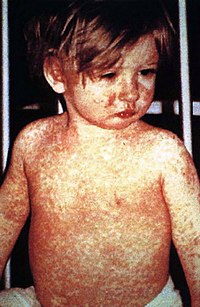
Characteristics of serum neurofilament light chain as a biomarker in hereditary spastic paraplegia type 4
Sign Up to like & getrecommendations! Published in 2022 at "Annals of Clinical and Translational Neurology"
DOI: 10.1002/acn3.51518
Abstract: While the anticipated rise of disease‐modifying therapies calls for reliable trial outcome parameters, fluid biomarkers are lacking in spastic paraplegia type 4 (SPG4), the most prevalent form of hereditary spastic paraplegia. We therefore investigated serum… read more here.
Keywords: spastic paraplegia; neurofilament light; paraplegia; hereditary spastic ... See more keywords

Novel CAPN1 missense variants in complex hereditary spastic paraplegia with early‐onset psychosis
Sign Up to like & getrecommendations! Published in 2022 at "Annals of Clinical and Translational Neurology"
DOI: 10.1002/acn3.51531
Abstract: CAPN1‐associated hereditary spastic paraplegia (SPG76) is a rare and clinically heterogenous syndrome due to loss of calpain‐1 function. Here we illustrate a translational approach to the case of an 18‐year‐old patient who first presented with… read more here.
Keywords: novel capn1; missense variants; spastic paraplegia; hereditary spastic ... See more keywords

Clinical and genetic characterization of NIPA1 mutations in a Taiwanese cohort with hereditary spastic paraplegia
Sign Up to like & getrecommendations! Published in 2023 at "Annals of Clinical and Translational Neurology"
DOI: 10.1002/acn3.51724
Abstract: NIPA1 mutations have been implicated in hereditary spastic paraplegia (HSP) as the cause of spastic paraplegia type 6 (SPG6). The aim of this study was to investigate the clinical and genetic features of SPG6 in… read more here.
Keywords: spastic paraplegia; paraplegia; hereditary spastic; genetic characterization ... See more keywords

FARS2 mutations presenting with pure spastic paraplegia and lesions of the dentate nuclei
Sign Up to like & getrecommendations! Published in 2018 at "Annals of Clinical and Translational Neurology"
DOI: 10.1002/acn3.598
Abstract: Mutations in FARS2, the gene encoding the mitochondrial phenylalanine‐tRNA synthetase (mtPheRS), have been linked to a range of phenotypes including epileptic encephalopathy, developmental delay, and motor dysfunction. We report a 9‐year‐old boy with novel compound… read more here.
Keywords: pure spastic; dentate nuclei; spastic paraplegia; presenting pure ... See more keywords

A novel CPT1C variant causes pure hereditary spastic paraplegia with benign clinical course
Sign Up to like & getrecommendations! Published in 2019 at "Annals of Clinical and Translational Neurology"
DOI: 10.1002/acn3.717
Abstract: Hereditary spastic paraplegia 73 (SPG73) was currently identified in only one family with variant in the neuronal isoform of carnitine palmitoyl‐transferase 1C (CPT1C) gene. We described a new family, in which affected individuals exhibited pure… read more here.
Keywords: pure hereditary; hereditary spastic; paraplegia benign; cpt1c ... See more keywords

Dominant KPNA3 Mutations Cause Infantile‐Onset Hereditary Spastic Paraplegia
Sign Up to like & getrecommendations! Published in 2021 at "Annals of Neurology"
DOI: 10.1002/ana.26228
Abstract: Hereditary spastic paraplegia (HSP) is a highly heterogeneous neurologic disorder characterized by lower‐extremity spasticity. Here, we set out to determine the genetic basis of an autosomal dominant, pure, and infantile‐onset form of HSP in a… read more here.
Keywords: hereditary spastic; spastic paraplegia; dominant kpna3; infantile onset ... See more keywords

A Recurrent KPNA3 Missense Variant Causing Infantile Pure Spastic Paraplegia
Sign Up to like & getrecommendations! Published in 2022 at "Annals of Neurology"
DOI: 10.1002/ana.26297
Abstract: With great interest we read the study of Schob et al in Annals of Neurology identifying 6 dominantly inherited or de novo KPNA3 mutations, in 8 patients from 5 families. In doing so, they implicate… read more here.
Keywords: kpna3; spastic paraplegia; missense variant;

CYP2U1 activity is altered by missense mutations in hereditary spastic paraplegia 56
Sign Up to like & getrecommendations! Published in 2018 at "Human Mutation"
DOI: 10.1002/humu.23359
Abstract: Hereditary spastic paraplegia (HSP) is an inherited disorder of the central nervous system mainly characterized by gradual spasticity and weakness of the lower limbs. SPG56 is a rare autosomal recessive early onset complicated form of… read more here.
Keywords: cyp2u1 activity; hereditary spastic; missense variants; spastic paraplegia ... See more keywords

Truncating variants in UBAP1 associated with childhood‐onset nonsyndromic hereditary spastic paraplegia
Sign Up to like & getrecommendations! Published in 2019 at "Human Mutation"
DOI: 10.1002/humu.23950
Abstract: Hereditary spastic paraplegia (HSP) is a group of disorders with predominant symptoms of lower‐extremity weakness and spasticity. Despite the delineation of numerous genetic causes of HSP, a significant portion of individuals with HSP remain molecularly… read more here.
Keywords: truncating variants; hereditary spastic; onset nonsyndromic; spastic paraplegia ... See more keywords

Compound Heterozygous DARS2 Mutations as a Mimic of Hereditary Spastic Paraplegia
Sign Up to like & getrecommendations! Published in 2021 at "Movement Disorders Clinical Practice"
DOI: 10.1002/mdc3.13258
Abstract: Compound heterozygous and sometimes homozygous mutations in the DARS2 gene have been described as a cause of leukoencephalopathy with brainstem and spinal cord involvement and lactate elevation (LBSL; Online Mendelian Inheritance in Man: 611105). LBSL… read more here.
Keywords: hereditary spastic; compound heterozygous; walking distance; spastic paraplegia ... See more keywords

Arginase 1 Deficiency in Patients Initially Diagnosed with Hereditary Spastic Paraplegia
Sign Up to like & getrecommendations! Published in 2022 at "Movement Disorders Clinical Practice"
DOI: 10.1002/mdc3.13612
Abstract: Arginase 1 Deficiency (ARG1‐D) is a rare autosomal recessive urea cycle disorder (UCD) characterized by pathologic elevation of plasma arginine and debilitating manifestations. Based on clinical commonalities and low disease awareness, ARG1‐D can be diagnosed… read more here.
Keywords: diagnosed hereditary; hereditary spastic; spastic paraplegia; arginase deficiency ... See more keywords